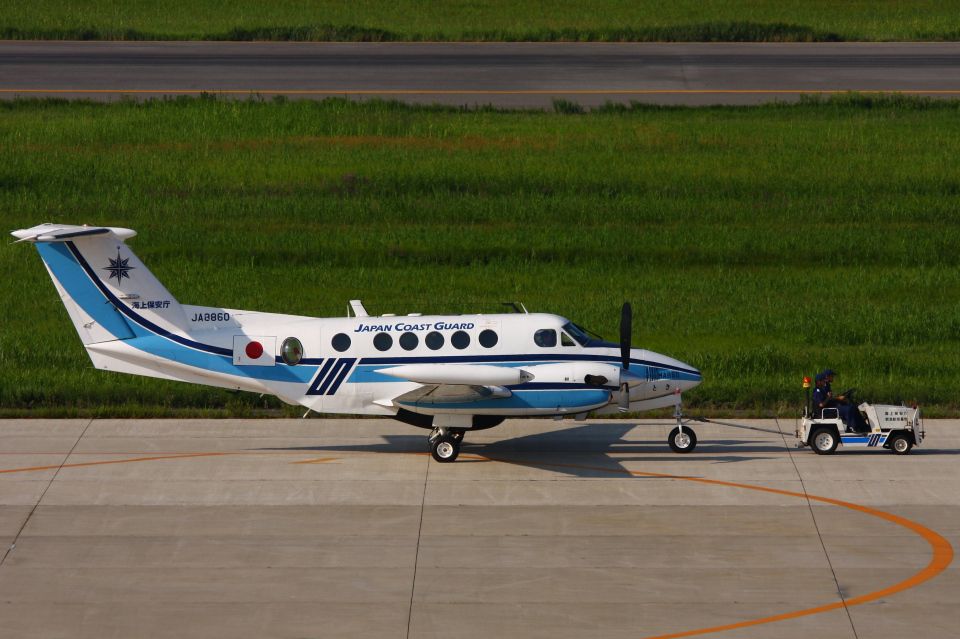A fixed-wing aircraft is used by Helisul in the aeromedical service and air taxi
The history of Beechcraft Corporation, formerly known as Beech Aircraft Corporation, began in 1932. Founded by Walter H. and Olive Ann Beech, the company launched, in mid-1964, the plane that would become a success world: the famous King Air. But, before we talk about the “King of Air”, let’s talk about the queen, the famous machine called Queen Air and its roots.
On August 28, 1958, the company registered the first flight of Beech Aircraft Queen Air. The aircraft was inspired by the success of the single-engine Model 35 Bonanza and its ‘brother’ Twin Bonanza, a twin-engine that attracted attention for its great structure and ended up winning over the US military. During an accident on a demonstrative flight, everyone was impressed by its robustness, as it was full of military personnel and everyone walked out of the twin-engine plane. A strong and safe plane in the eyes of the army which, shortly after the incident, acquired 216 of the 994 Twin Bonanza produced.
Okay, but what does the King Air have to do with a piston twin engine? Due to the lack of power of the piston engines and the failure of the pressurized Queen Air 88, Beechcraft needed a versatile plane, strong and with enough power, that could be pressurized without suffering a great loss of performance.
Thus, the idea of the King Air was born, an airplane with all the characteristics mentioned. Developed from a combination of Queen Air and the famous Pratt & Whitney Canada PT6A-6, this plane would be the model 87, based on the Queen Air A80. After 10 months of testing, it would be delivered to the US military.
On January 1964, the definitive model called the King Air 65-90 took its first flight. The turboprop equipped with two Pratt & Whitney PT6A-6 without pressurization was an object of desire in the North American aeronautical market. At the end of January, 152 aircraft had already been ordered and, in October 1964, the first order was delivered.
In order to serve the North American and European markets with high purchasing power, basically made up of ranchers, businessmen and executives who wanted and needed a type of comfortable and fast transport but without giving up the operational flexibility to land and take off on short runways, the manufacturer Beechcraft made the Pratt & Whitney PT6-A with power increased to 850 shp each.
In 1966, after 112 models of the 65-90, Beechcraft made some changes and started selling the 65-A90 with engine changes, becoming the PT6A-20. With the success of production, completing 206 aircraft in less than two years, the company changed again, now to the King Air B90 model, the first being produced in 1968. Beechcraft produced some models designated for the armed forces, but all of them without the pressurization system. In the period between 1967 and 1971, 162 aircraft were produced for the US Army.
The King Air B-200 was born in the early 1970s, but under another name: King Air 100. In the 1980s, it received the definitive name of King Air B-200, with an elongated fuselage to comfortably transport six or seven passengers in interstate travel, including most of the good features of the King Air F-90 plus a galley option, a compact compartment for water, juices and soft drinks.
Pressurized turboprop
Other models were developed later, until the big change they were looking for appeared in 1982: a pressurized turboprop, the King Air C90-1. The flexibility of landing and taking off on short runways, with obstacles close to the thresholds and extensions, is the reason why many customers opt for the turboprop aircraft, as jet aircraft in general have technical limitations in this regard.
In the 1990s, this rich market began to demand more and, as a natural consequence, Beechcraft made the Super King Air 350 available to its customers, with an even more elongated fuselage to comfortably transport 8 or 10 passengers, depending on the adopted configuration, preserving the same practical characteristics of previous models, with flexibility to land and take off on short runways, without loss of flight quality.
Fun facts about the King Air in general:
- There are more than 7,000 aircraft sold and more than 60 million hours flown worldwide, without a doubt a success.
- These are aircraft used in different types of operations, including the Aeromédico, fulfilling its role very well by helping to save lives, not only in Brazil, but throughout the world.
- The Super King Air has been in production since 1974, the largest continuous production turboprop in history.
- In 1996, the term ‘Super’ was removed from the name, leaving only King Air B200, B200GT B300…
- The King Air line was used by the President of the United States, Lyndon B. Johnson, in 1966. Currently, the B90 model is located at the Museum of Wright-Patterson Air Force Base, in Ohio.
- In 2011, in the earthquake of Tohoku, in Japan, the aircraft used by the coast guard were of the King Air 200T model, one of which (PR-KEM) is currently in operation in the Helisul aeromedical service b>.
- Featured in the photo is PRKEM in the days of the Japanese Coast Guard. Manufactured in 1988, this special version of the King Air B200T was one of nine that belonged to the Japanese Coast Guard (registration JA8860). You can see on this model the wings with a tank on the tip for better reach and the bubble window on the back for observation.
This is a small part of the history of this great aircraft and some curiosities about it.
Search related links:


